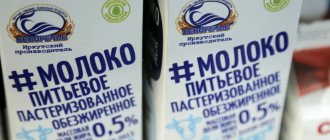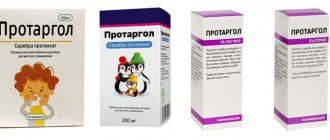Hello everyone, Olga is with you as always, perhaps you will need information on storing food and various things and I will tell you about How to store coconut at home. Maybe some details may differ, as was the case with you. Attention, always read the instructions of the things you buy for cleaning the house or the chemicals that help to store them. I answer the simplest questions. Write your questions/wishes and secrets in the comments, and together we will improve and supplement the quality of the material provided.
Shelf life of coconut
If you store coconut on a shelf in the refrigerator, the shelf life of a whole coconut increases to 30 days. Some believe that up to 2.5 months. You can store a closed coconut in a kitchen cabinet at room temperature, but no more than a week. With longer storage, the fruit begins to dry out and deteriorate, losing its taste and beneficial properties.
An opened coconut doesn't last long. Even if stored in the refrigerator, it will stay fresh for at most 2 days. Coconut milk, poured into a glass container and tightly closed with a lid, can be stored in the refrigerator for up to 7 days.
This can be done by freezing both the coconut milk and the pulp. Before pouring the milk into ice molds, you need to carefully remove the fat that has formed from the surface, otherwise it will not harden and will then flake off. The shelf life of frozen coconut milk is up to 2 months. It is best to grind the pulp in a blender. Place the resulting coconut crumbs in a vacuum bag and put them in the freezer. It should be used immediately after defrosting and is best used in cooking. Frozen coconut can be stored for up to 1.5 months.
Features of use
If you bought coconut milk and, when you get home, want to drink it right away, then you just need to shake it well before drinking . This must be done, because during storage the product separates, that is, water appears at the bottom, and a thick white mass collects at the top. This does not affect the taste in any way.
A container of milk that has been stored in the refrigerator must first be placed in hot water for 5-10 minutes, and then shaken and drunk. Before drinking milk that has been stored in the refrigerator in an open container, you must not only hold it in hot water for 5-10 minutes, but also stir it periodically.
Do not forget that the consumption rate of coconut milk is far from the same as that of cow's milk. For an adult, 100 ml every 3-4 days is enough, for children over 3 years old - no more than 50 ml.
How to store coconut at home
Fresh, unopened coconut can be stored for quite a long time. In this case, one condition must be observed - do not keep it next to other fruits.
Do you use expired food for cooking at home?
Yes, the main thing is to process it if it is meat or expired kefir for pancakes.
27.47%
No, it is very dangerous and not useful.
35.14%
If the products have fungus or mold, then we throw them away; if they are a couple of days past their expiration date, we use them for food, even without heat or other treatment.
37.39%
Voted: 2479
On the shelves of our stores, the beloved coconuts have long been side by side with the usual nuts and fruits. In addition to their pleasant taste, they contain folic acid, which is so necessary for all of us, which is responsible for cell growth throughout the body, their renewal and restoration. Women especially need it during pregnancy. Coconut contains a lot of vitamin C, proteins, fats and carbohydrates. In order to maintain all the beneficial properties of this product, it is very important to store it correctly at home.
Useful tips
Tips to help when storing the product:
Coconut milk is not a cheap product.
If such a luxury is not permissible, then try making a delicious drink yourself at home. The nut pulp must be carefully cut off, crushed in a blender and poured with warm water (400 ml per 1 coconut). Let it brew a little, squeeze it out with gauze and pour the resulting drink into a container.- Coconut milk cannot be called low-calorie, but it is absorbed by the body better and faster, so it does not have time to be deposited as fat. In addition, this product contains no cholesterol. So for people losing weight, its use is quite acceptable.
- Due to the fat content of coconut drink, it is recommended to dilute it with water. For example, to cook porridge with it, take 1 part milk and 2 more parts water.
- When choosing a coconut drink in the store, give preference to producers from tropical countries. Powdered milk is produced in Russia and Europe.
- Coconut milk should not be boiled, otherwise it will separate into flakes and water.
- You can replace coconut milk in recipes with cow's product with the addition of coconut flakes.
Coconut oil
Coconut oil is a universal product that is just gaining ground among edible oils on our Russian market. It has a light coconut aroma and a slightly sweet taste. Excellent for baking a variety of pies, cookies, buns and cakes, adding a slightly piquant taste to baked goods. Coconut oil has the important property of not losing its qualities during heat treatment.
This oil is of plant origin, therefore it contains sufficient quantities of Omega-3 fatty acids, which are necessary for our body and which the body itself cannot produce, but receives only from food, including vegetable oils.
Coconut oil also helps burn fat, which is important when losing weight. It is recommended to use it in its pure form, 1 tbsp. spoon before meals to improve digestion and speed up metabolism. It is also recommended for lowering blood sugar in diabetes mellitus. Helps treat coughs and other manifestations of colds and viral diseases.
Several recipes for using coconut oil in your diet:
- place nuts in a blender, add coconut oil, stir, you will get a very tasty nut butter for breakfast tea, and also very filling;
- replace your salad oil with coconut oil, this will give your dishes a special taste;
- very good to use in baking;
- perfect for porridge, replacing butter;
- We are more accustomed to using coconut oil as an excellent cosmetic product.
- It is difficult to find a more effective moisturizer in cosmetology than coconut oil. Perfectly nourishes dry hand skin even without the use of any additives. It is enough to rub this oil in, and the skin will become soft and elastic;
- mask for moisturizing and nourishing hair. Mix coconut oil with honey, apply to hair, leave for 40 minutes, rinse with shampoo;
- moisturizing and antibacterial face mask. Mix coconut oil with honey, apply to clean facial skin, hold for 15 minutes, rinse with warm water;
- moisturizes lips better than any hygienic lipstick.
What does safety depend on?
Any natural product has an expiration date, after which it becomes unusable.
Coconut oil is no exception, which, despite its use, is just one type of vegetable oil.
Of great importance for shelf life are:
- Type of oil. Refined coconut oil has a longer shelf life than unrefined coconut oil. Oil made at home has the shortest shelf life.
- Tara. It is not recommended to keep oil in plastic bottles; it is preferable to use tinted glass.
- Storage conditions: temperature, humidity, exposure to sunlight, etc.
All products remain suitable for consumption for a certain period. The shelf life of coconut oil is directly affected by:
- type of product (storage duration depends on it);
Shelf life of a dairy product according to GOST before and after opening the package
Based on Article 472 of the Civil Code of the Russian Federation, the expiration date is a period of time after which the product cannot be used. The shelf life is set by the manufacturer, while complying with the legal requirements for the conditions of keeping the product.
Article 472 of the Civil Code of the Russian Federation. Product expiration date
- The law or the procedure established by it may provide for the obligation to determine the period after which the product is considered unsuitable for its intended use (expiration date).
- The seller is obliged to transfer a product for which an expiration date has been established to the buyer in such a way that it can be used for its intended purpose before the expiration date, unless otherwise provided by the contract.
According to Decree No. 720 of June 16, 2017 and the Law “On the Protection of Consumer Rights,” the Government of the Russian Federation has established a list of goods that, after the expiration of the period of use, may be dangerous to human health and life. Dairy products are also on this list.
Based on Article 473 of the Civil Code of the Russian Federation, the expiration date can be designated in 2 options:
- Sell by. The exact date of expiration of the period of use is indicated on the packaging, for example, “Expired until July 22, 2024.”
- Good within. This is a time period that is counted from the production date. For example, “Best for 4 months.”
The shelf life of dairy products is determined by GOST 31450-2013 “Drinking milk. Technical conditions". According to the state standard, the shelf life is set by the manufacturer himself, taking into account the requirements of regulatory documents on food safety. Based on Resolution No. 98 of May 22, 2003, the shelf life of dairy products must be justified by the manufacturer of the product.
To confirm them, the manufacturer is obliged to provide government authorities with information on ways to increase the safety of products:
- Improving the quality of raw materials.
- New types of packaging.
- Improving production technology.
- Strengthened sanitary control at the enterprise.
The manufacturer is also obliged to provide test results that confirm the safety of the product for consumption throughout the entire shelf life of the product.
Milk is one of the healthiest products in the human diet. After all, it contains more than 100 elements: minerals, vitamins and amino acids, as well as lactose. But in order not to harm your health, you should be aware of the peculiarities of storing milk depending on its type. We will tell you under what conditions various dairy products can be kept and how their shelf life is affected by the method of heat treatment.
Sukhoi
Powdered milk is obtained by drying a pasteurized milk product. First there is a normalization process. The ratio of proteins, fats and carbohydrates is given in accordance with the requirements of GOST 52738-2007. This is followed by the processes of pasteurization, thickening and drying at a temperature of 150-180°C on special equipment. After drying, the milk is sifted and cooled.
Based on GOST 52791-2007 “Canned milk products. Powdered milk. Technical specifications" products are divided into dry whole and dry low-fat.
- Skim milk powder contains only 1.5% fat and has a shelf life of 36 months.
- The shelf life of whole milk powder is up to 8 months. After opening the package, the product should be consumed within a month.
The period of use of whole milk powder will be shorter than skim milk due to the increased fat content in its composition (25%).
Sterilized
Dairy products are exposed to temperatures above 115°C during sterilization. Such high temperatures destroy milk enzymes and destroy microorganisms and pathogenic spores.
The shelf life of the sterilized drink is up to 6 months if unopened. But after opening the package it must be consumed within 7 days.
The shelf life of dairy products is determined by GOST 31450-2013 “Drinking milk. Technical conditions". According to the state standard, the shelf life is set by the manufacturer himself, taking into account the requirements of regulatory documents on food safety. Based on Resolution No. 98 of May 22, 2003, the shelf life of dairy products must be justified by the manufacturer of the product.
How long can opened milk be stored?
Like other types of vegetable fats, coconut oil comes in two types:
- cold pressed (so-called “unrefined”);
- hot pressed (refined).
The features of standard vegetable oil also apply to coconut oil.
Unrefined oil contains more useful substances, but has a significantly shorter shelf life than hot-pressed oil.
On the Russian market, factory-made coconut oil is usually represented by products from two countries: India and Thailand. The shelf life of factory oil is the same for these countries.
Tourists visiting Thailand often bring coconut oil from this country, produced by small family firms and sold on tap. Such products should not be stored for more than a few months, since there is no guarantee of compliance with technical conditions during its production.
When answering the question of how long coconut can be stored, a period of 2.5 months is usually quoted. Then the fruit begins to deteriorate. You can store not only the whole nut, but also its individual components - pulp and liquid.
In a refrigerator
There are a number of nuances in the question of how to store an open coconut. Usually the taste is preserved for two days after opening. And this is provided that the opened fruit is placed in the refrigerator. The nut can be placed on any shelf, but it is better where it is colder.
A whole coconut retains its taste for up to three months at a temperature of 5⁰C. Then the nut loses its liquid and becomes tasteless.
The shelf life of coconuts depends on temperature:
- At a temperature range of 0 to 5⁰C, the fruit can be stored for 7-10 days without fear for taste and freshness.
- At temperatures above 5⁰С – no more than one week.
- At stable 5⁰С – for 2-3 months.
By separating the pulp and liquid, you can increase the shelf life of both products. The water must be drained into any container. In this form it will remain fresh for a week. Coconut pulp (without water) can be stored for 7 days.
Coconut milk can be frozen by pouring it into ice cube trays and then used in cubes for up to two months. If frozen for a longer period, the characteristic taste will disappear.
The shelf life of the product will increase if it is properly frozen. In this case, the pulp will last up to 8 months. But its structure after freezing will become loose. It is better to immediately divide the pulp into several portions and put them in different bags. This will eliminate the need for re-freezing.
After drying
When answering the question of how long a coconut can be stored, be sure to clarify what form it is in. If the pulp is dried, the shelf life of the product will be 12 months. To preserve its taste, it must be kept in airtight plastic containers. For the same purpose, the dried product can be stored in fabric bags: linen or cotton.
It is better to dry coconut flakes and store them at room temperature, in a cool, dry and well-ventilated place. You cannot put the product in the refrigerator - condensation may accumulate, which will lead to the formation of mold and rot.
Answering the question of how to dry a coconut, knowledgeable people recommend first grinding the pulp in a food processor and then drying it for three hours in an oven preheated to a temperature of 60⁰C. Afterwards you need to cool the contents and pack them into containers.
You can dry the pulp using a microwave oven or an electric dryer, choosing the optimal mode.
How long can opened milk be stored in the refrigerator?
The shelf life of milk will depend on the temperature at which it is stored. The lower the temperature, the longer the milk lasts.
If you are interested in store-bought pasteurized milk, which is sold in plastic bags, in my refrigerator at a temperature of about 3 such milk is stored after opening the bag for up to three days. But it’s better to use it two days before.
Milk is ultra-pasteurized, which lasts longer in cardboard bags after opening the bag.
If we are talking about raw cow's milk, then in an unboiled form in a regular refrigerator (temperature from 3 to 3). It stays fresh for a little more than 24 hours. Boiled milk can last longer.
When parents kept cows, in the summer they put raw milk into the cellar immediately after milking, where it was safely stored for three days. The temperature in the cellar was slightly above 0, about 1 - 2 degrees.
In a refrigerator
Coconut, having long ceased to be something exotic, is nevertheless inevitably associated with palm trees, white sand, hot sun and sea. Just seeing it will make you immediately think about vacation.
It is advisable to eat it immediately after purchase, but it can lie at home for some time without spoiling, without compromising its taste.
In this regard, it is important to choose the right nut, which is actually not a nut, but a kind of drupe fruit (from the same category - peaches, plums, cherries, but the “bone” of a coconut is also its pulp, the seeds are contained in it ). This is the only way to get the full flavor experience.
Secrets of coconut storage
Housewives generally buy coconut for a specific occasion and immediately process it. But there are times when coconut needs to be preserved for a certain time. To do this, a number of conditions must be met that will prolong the freshness of the nut. Here are some of them:
- If the nut has not been used after opening, it should be placed in the refrigerator.
- Coconut milk must be poured into a container with a tight lid and also stored in the refrigerator.
- Unopened fruit is best placed in a cool, dark place. A refrigerator will also work.
- Fresh coconut meat can also be stored in the refrigerator. Another great way to recycle the pulp is to dry it and make coconut flakes, which are best placed in the pantry.
- When choosing a nut for long-term storage, inspect it for extraneous stains, chips and dents. Shake the fruit, if you hear the splash of milk in the middle - the coconut is ripe.
- If you decide to store coconut in the cellar, place it away from apples, beets and pears. These fruits produce ethylene, which helps other fruits ripen quickly.
- With sudden changes in temperature, coconut can lose its taste and quickly rot.
- Coconut pulp loses moisture very quickly, so it is advisable to moisten it with water before storing. This will make it less tasty, but will retain its freshness.
- If shaken vigorously, coconut milk may turn into cream. There is nothing wrong with this, the nut does not lose its taste as a result, and the cream can be used in cooking. They should be stored in the refrigerator for no more than a week.
Is it possible to increase the time frame?
If milk is stored in the refrigerator for a long time after opening the can, be sure to check it periodically for signs of spoilage:
- stale taste, reminiscent of tin (this is why it is not recommended to store the product in an open tin container, as coconut milk begins to gradually absorb the smell of the can);
- the surface of the milk is covered with pink mold;
- the product has acquired a grayish color.
To prevent spoilage of an open drink, it is better to immediately pour it into small containers and freeze it. This way you can extend the shelf life up to four months.
After drying
Dried nut pulp has the longest shelf life. It is about a year. Dried coconut flakes and shavings are best stored in an airtight glass container, or even better in natural fabric bags.
The dishes with the finished product can be placed in the pantry, the main thing is that the place is dark, cool and has good ventilation. But the refrigerator is completely unsuitable for this product. There is too much risk of condensation forming, which can lead to mold.
Before drying, the coconut pulp needs to be crushed, this is best done using a food processor. Drying must be done in an oven preheated to 60 degrees for three hours. After cooling, package as described above. Also, a microwave oven or a special electric dryer is also perfect for drying.
What do the resulting flakes indicate?
It happens that when you open a can of coconut drink, you can find flakes formed in it .
This is not yet a reason to think that it has deteriorated. It was simply stored or transported at the wrong temperature (in cold conditions). The buyer has every right to return such product to the point of sale.
The flakes do not have any effect on the taste of the prepared dishes. It is quite acceptable to use such milk for confectionery and baked goods, soups and cereals, cocktails and smoothies. But it is not recommended to add it to granola or coffee, as the flakes will spoil the taste.
How long does coconut last?
Experts say that the average shelf life of a coconut is two to three months. But there are a lot of nuances on which the duration of this process depends. In addition, you can store not only the whole coconut, but also its pulp and milk. Therefore, the safety of each component will be discussed in more detail below.
An original way to store coconut liquid is to freeze it in ice cube trays. In this state, it can be kept in the refrigerator for about two months. After this period, it will not deteriorate, but will lose all its taste.
How to store coconut milk: general recommendations
Coconut milk is sold at retail outlets in cans and tetrapacks. The manufacturer indicates storage conditions on the packaging. In sealed packaging, coconut milk can be stored for 24 to 36 months at temperatures ranging from +2 to +30 degrees.
A small life hack: when buying a product, choose packaging that says it has a shorter shelf life. This milk will contain fewer preservatives and other “chemicals”. Ideally, the product should consist of only two components: concentrated coconut milk and water.
How and where to store shelled coconut
Even at the optimal temperature, you should not keep coconut pulp for a long time. To the question: how long can coconut be stored in the refrigerator, there is only one answer. No more than two days. This period can be slightly increased if you fill the pulp with water. Next, it is advisable to grind the peeled coconut into shavings and place it in the freezer.
Frozen chips can be stored for no more than six months. Before freezing, it should be packaged in small portions that are easy to consume at a time. Repeated freezing is not recommended.
Spoiled coconut meat
Even when frozen, exotic fruit must be hermetically packaged and stored separately from products with strong odors. This is the only way to preserve its taste as much as possible.
Benefits of coconut milk for the human body
The fruit of the coconut palm contains a lot of fat. But this fat is the most beneficial for health: in the human body it is quickly broken down, turning into energy. Even those who want to lose weight can drink coconut milk in small quantities.
The fats contained in coconut pulp are beneficial for the endocrine system. Doctors recommend drinking coconut milk to enhance the production of insulin in the blood. Thanks to this product, useful in all respects, the load on the kidneys, liver, pancreas, adrenal glands and gallbladder is reduced.
Drinking coconut milk is indicated for removing toxins from the body and strengthening its defense against bacteria, viruses, fungi and yeast.
We recommend reading: How to store cut avocados at home
Many people confuse coconut milk with juice, the liquid that ripens inside the tropical fruit. Milk is an artificial product obtained by squeezing the pulp and then adding water. The percentage ratio is 60 to 40: 60% pulp and 40% water.
Let's look at how long coconut milk can be stored in the refrigerator after opening , how to properly freeze and consume it.
Shelf life of coconut
When talking about how to store coconut at home, you need to understand that the shelf life of any product directly depends on its storage conditions. For tropical “nuts”, humidity exceeding 70% and temperatures above 20 ºC are not allowed. In the refrigerator it will not spoil within 2-3 weeks. Moreover, its safety directly depends on the integrity of the peel. Damaged fruit should not be kept for more than 2-3 days, even in the refrigerator, otherwise there is a possibility of getting a spoiled and sour coconut.
Information about the expiration dates and storage conditions of any products can be found directly in the store. It must be printed on the product label. If there is no such label, the buyer has the right to report the violation to the regulatory authority.
If the nut has not yet been opened, there are no cracks or spots of rot on it, there is no sour smell coming from the peel, it can be kept in a cupboard or on a shelf in the pantry. The main thing is that it is dry and dark, the air temperature does not exceed 20 ºC, and the humidity ─ 70%.
Rules and storage time
Coconut milk should not be confused with juice. Many people believe that milk is the liquid that formed inside the coconut as it ripened. This is incorrect, such a liquid is called juice, it is completely fat-free and consists of 95% water.
Milk is produced artificially - the pulp of the nut is squeezed out and mixed with water (approximate ratio: 60% coconut and 40% water).
You can make your own coconut milk. But now this product is no longer so exotic and is sold in any supermarket . To prevent its premature deterioration, it is imperative to monitor the expiration date and comply with certain storage conditions.
How can you tell if coconut oil has gone bad?
Signs indicating that coconut oil has become unusable:
- the appearance of bitterness in taste and unpleasant odor;
- the hard substance loses its snow-white hue, and the soft substance ceases to be transparent;
- the oil begins to exfoliate, becomes yellowish, interspersed with crumbs and lumps;
- stains, traces of fungus and mold appear on the surface.
A spoiled product should be thrown away immediately to avoid harm to your own health.
Shelf life depending on processing method
To get the maximum beneficial properties from coconut oil, you should carefully monitor proper storage. After the jar is opened:
- close the lid tightly;
- store in dark plastic or glass;
- keep away from sunlight;
- prevent moisture from entering;
- store at a temperature of 5 to 8 degrees (if the product is cold-pressed and unrefined oil, and within 25 degrees for refined oil);
- do not put it in the refrigerator (the shelf life is unlikely to increase, but the beneficial properties and consistency will deteriorate).
Designate a shelf for the container in the refrigerator, away from the door, or a cabinet located far from the window and heating appliances.
Signs indicating that coconut oil has become unusable:
- the appearance of bitterness in taste and unpleasant odor;
- the hard substance loses its snow-white hue, and the soft substance ceases to be transparent;
- the oil begins to exfoliate, becomes yellowish, interspersed with crumbs and lumps;
- stains, traces of fungus and mold appear on the surface.
A spoiled product should be thrown away immediately to avoid harm to your own health.
The shelf life of milk depends on many factors. Since this product is constantly present in the diet of most people, and spoils very quickly, it is better to just learn once how to store it correctly.
Nutritionists and pediatricians recommend drinking this drink regularly. It contains about 200 useful substances for the body, including a large amount of calcium, lactic acids, protein and a whole range of vitamins.
Not everyone can drink milk; there are categories of people who should limit or exclude the use of the product - these are the elderly and allergy sufferers with lactose intolerance.
If there are no contraindications, you can and should drink milk with virtually no restrictions. To get the most benefit from this product, it must be selected correctly and stored under suitable conditions.
This article will talk about how long different milk can be stored, what it should be kept in, and how you can increase its shelf life.
The storage of milk and other dairy products is determined by the processing method. The shortest shelf life of a raw drink is just a few days in the refrigerator. Various production technologies make it possible to extend the life of the product for up to 6 months.
The following conditions are essential for the shelf life:
- Product processing method (sterilization, pasteurization, etc.);
- Packaging (plastic bottle, bag or tetra pack);
- Storage conditions (temperature).
In order for milk to be stored as long as possible and not lose its taste and benefits, you must follow some rules:
- The product should not be kept in direct sunlight - this will cause it to lose vitamins and spoil faster;
- The most favorable temperature for the product is created on the shelves of the refrigerator - no higher than 3-4 degrees;
- The drink must be kept in an airtight container so that it does not absorb foreign odors;
- The shelf life of milk can be increased by boiling it or pasteurizing it at home.
All known milk processing methods affect the quality of the product. When heated, some of the vitamins are destroyed. However, even though raw milk contains more useful substances, drinking it is dangerous; it may also contain pathogenic bacteria. Therefore, it is better to choose something that has been processed, with a short shelf life and the maximum proportion of preserved vitamins.
The most important characteristic that determines how long milk can be stored, no matter whether it is packaged in a bottle or bag, is the method of its processing. On store shelves you can find milk whose shelf life ranges from several days to several months.
How do manufacturers manage to increase it so much? There is an opinion that shelf-stable milk is unnatural, however, modern processing methods make it possible to preserve ordinary cow's milk for such a long period without losing its beneficial properties.
What processing methods exist and how much do they increase storage duration:
- Raw. You can buy this at a spontaneous market or from farmers. It must be boiled before eating. The quality of such products cannot be monitored, so they may contain pathogenic microorganisms. Without boiling milk, the shelf life is 2 days, for boiled milk up to 5 days.
- Sterilized. This product is treated with high temperature (over 100 degrees) under pressure for several seconds. The sterilization process kills all germs, and with them most of the goodness. Shelf life: up to 6 months in unopened original packaging.
- Pasteurized. The drink is heated to a temperature of 70–75 degrees. Due to this, it is possible to increase the shelf life to 5 days and at the same time preserve more useful substances.
- Ultra-pasteurized milk. Such a product is heated to 137 degrees for a few seconds and sharply cooled to 20 degrees. This method allows you to preserve milk in an unopened bottle for up to 6 months. After ultra-pasteurization, the drink does not spoil, since all lactic acid bacteria are destroyed.
Thus, today there are ways to preserve the freshness and benefits of this beloved drink for a long time. However, processed milk is indeed much safer than raw milk. Sometimes production uses aseptic bags for packaging, which minimize the possibility of the development of pathogenic microflora.
Milk is used to make a lot of other useful everyday products that require a refrigerator for storage. For example, knowing how long butter or sour cream, kefir, or cottage cheese can be stored in the refrigerator, you can be more rational in your purchases and use only fresh ones, getting the full benefit from them. benefits inherent in nature.
Let's return to milk. There are other processing methods that produce another independent and very tasty dairy product. We'll talk about this later.
Baked milk is essentially concentrated regular milk. It contains more fat and calcium. The process does not use high-temperature heat treatment, so most of the vitamins are preserved. The drink is subjected to prolonged heating to 85–95 degrees. Store it exclusively in the refrigerator in a closed container. Shelf life is up to 7–10 days.
In the process of preparing condensed milk, prolonged heating to high temperatures occurs, so there is little benefit left in such a product; its main consumer property is taste. The shelf life of condensed milk is from 1 to 2–3 years.
Milk powder is the solid residue of milk after all the moisture has dried. It can be stored in a cupboard at room temperature for a long time. If the raw material has been skimmed, the shelf life of powdered milk is 3 years from the date of manufacture; whole milk is stored for 10 months - after this time the fats in it may go rancid.
If the milk was raw and did not go through the boiling procedure, it will turn sour after the expiration date. From this product you can make yogurt, if you put it in a warm place for a day, or homemade cottage cheese, for this you need to heat it at a low temperature for several hours.
A product that has been processed by pasteurization, sterilization and boiling does not turn sour, but acquires an unpleasant taste and smell. If the shelf life expired no more than a day ago, this milk can be used to prepare pancakes and many other hot dishes. If taste changes, discard.
Powdered and condensed milk after the expiration date and while maintaining the taste can be used for baking. If the taste has changed, the product must also be thrown away.
Dairy and fermented milk products are one of the most important in our diet and their freshness is more a necessity than a whim, and therefore knowing and checking the expiration date of milk, cottage cheese or sour cream before purchasing should become a useful habit when going to the store.
Coconut oil is a popular cosmetic and medicinal product with widespread use in these areas.
Coconut oil is also used to a limited extent in cooking as a vegetable oil or for preparing exotic oriental dishes. We’ll talk about the shelf life of coconut oil in the article.
Dear readers! Our articles talk about typical ways to resolve legal issues, but each case is unique.
—{amp}gt;
How and where should it be stored? The rules that must be followed when storing coconut oil are quite mild:
- The oil can be stored at room temperature or colder, such as on a refrigerator shelf. At temperatures above 25°C it begins to melt and acquires a liquid consistency. At lower temperatures it hardens. The benefits and qualities of the oil do not change. Coconut oil is negatively affected by exposure to higher temperatures, for example, when heated from direct sunlight. The ideal temperature would be between 4 and 25°C.
- Desirable air humidity is no more than 60%.
- Container - a glass bottle, factory ampoule or capsule.
Storing coconut oil in metal or plastic containers will spoil the product.
It is impossible to store oil at lower temperatures, for example, in the freezer, since freezing has a detrimental effect on its valuable qualities.
Depending on the container the coconut oil is in, once opened it can be poured into a tinted glass bottle. This technique can be applied to oil purchased by weight or made at home. To reduce the likelihood of air ingress, it is advisable to use a tight stopper, since screw caps can allow air to pass through.
The popularity of coconut oil has increased greatly in recent years.
- Cold-press technology ensures that the product retains all its most beneficial properties. This oil is called unrefined;
- Hot pressing technology provides the buyer with a refined product that is more affordable, but significantly inferior in useful properties.
How can you tell if a coconut has gone bad?
To ensure that eating coconut only brings pleasant experiences, you should make sure before eating that it is suitable for consumption. It’s easy to find out if a nut has gone bad by the following signs:
- darkening of the outer surface;
- the appearance of stains, dents and traces of mold on the skin (the liquid can disappear and turn sour if the integrity of the skin is damaged);
- drying of the pulp if it has been peeled;
- a dull and heavy sound when shaking milk if the coconut is not opened.
When closed, the nut is stored longer than after opening. You should not clean it prematurely; it is better to do this immediately before eating.
Storage conditions
The correct way to store a coconut with its whole husk is in a dry and cool place - a pantry or kitchen cabinet will do. The optimal temperature is no higher than +20°C, and humidity no more than 70%. Under these conditions, the coconut will remain fresh for 30 days.
In a refrigerator
The ideal place for coconut is the refrigerator
When purchasing, pay attention to where the fruit lies. The ideal storage location is a refrigerator
How long can coconut be stored in the cold? If you leave it on the refrigerator shelf, you can eat it after three months.
Find free space in the refrigerator for an exotic fruit and do not leave it next to apples, pears or bananas. They produce ethylene, which speeds up the ripening of the fruit, which leads to spoilage of the coconut.
Opened coconut
Once the coconut is opened, the only suitable place to store it is in the refrigerator. Store opened coconut at +5°C and 70% humidity. In these conditions it will remain fresh for two days.
Wrap the coconut in cling film - its flesh will not oxidize when exposed to oxygen and will remain fresh longer.
Coconut pulp
The pulp of an exotic fruit, once opened, will not remain fresh for long. Carefully separate it from the shell, place it in a suitable container and cover tightly with cling film. On the refrigerated shelf at a temperature of +5°C, the pulp remains fresh throughout the day.
If you need to preserve the pulp for several months, a freezer will help with this. Carefully separate the pulp from the shell, grind in a blender, sprinkle with coconut water, place in portions in freezer bags and place in the freezer compartment.
Coconut pulp can be stored in the freezer for up to six months. Do not defrost it before cooking, otherwise it will become watery and tasteless.
coconut flakes
To keep coconut flakes fresh for a long time, place them in an airtight bag and store them in a dry, dark place. Do not leave it near products that have strong, pungent odors - the shavings have the property of absorbing them. It remains fresh and edible for no more than a month.
Coconut milk
Even if you leave opened coconut milk in the refrigerator, it will not stay fresh for more than a day. If you buy milk in a store, in a special sealed package and follow all storage recommendations indicated on the package, the shelf life increases to 12 months.
After opening a package of store-bought coconut milk, consume it within 48 minutes. If you are not going to use the entire package right away, pour the remainder into a glass glass, close tightly and put it in the refrigerator.
Can coconut milk be frozen for storage? Coconut milk is fatty and is not recommended to be frozen. After defrosting, it will separate, become watery and lose its unique taste and beneficial properties.
Coconut oil
Once the package of coconut oil is opened, put it in the refrigerator. To make it last as long as possible, follow the storage rules:
- unrefined and cold-pressed oils are suitable at temperatures from +5°C to +8°C, refined oils can be kept at a temperature no higher than +25°C;
- suitable humidity is about 70%;
- The ideal container for coconut oil is plastic or glass;
- The lid closes tightly.
If you do not follow these recommendations, the oil will quickly lose its beneficial properties.
How to remove hairs from a coconut?
Removing tough hairs from the surface of coconut shells is not easy.
- if the hairs are thin, cut them using sharp scissors;
- treat the surface with a razor (manual or electric);
- put the coconut in an iron bowl and carefully singe it with a lighter (you need to act very carefully so as not to get burned and prevent the fire from spreading).
A spoiled product should be thrown away immediately to avoid harm to your own health.
Let's work together to make the unique material even better, and after reading it, we ask you to repost it on a social network convenient for you. net.
How to Freeze Coconut Cream
Coconut cream and coconut cream are frozen in a similar way.
But due to the lack of excess moisture and higher fat content, the processes of separation of proteins and fats in these products will occur more intensely.
Sigaeva Olga
Culinary expert.
Ask a Question
Question to the expert
How to make coconut milk from coconut cream?
Mix 2 tablespoons of coconut cream with ¾ cup of water, stir, and one cup of coconut milk is ready.
Which is correct?
In addition to observing the time limits for freezing a natural product, it is important to choose the right storage container. You also need to remember: different types of milk will behave differently in the freezer
Selection of containers
Frozen milk can be stored in different containers:
- in plastic bottles;
- in plastic bags with a zipper;
- in ice trays (frozen white cubes are convenient to add to hot drinks).
The plastic freezer bag can only be used once.
In a bottle
In addition to plastic bottles from store-bought milk, you can use containers from baby food, juices, and yogurt.
It is most convenient to freeze milk in 0.3-0.5 liter bottles. This amount is enough to prepare pancakes or porridge for a family of three.
It is more convenient to place small bottles on the freezer shelf - there is little space between them.
How to freeze milk in a bottle:
- Wash the inside of the container thoroughly, turn it over and let the drops drain. Dry the bottle, pour boiling water over it (sterilization is not suitable for disposable containers).
- Pour the drink into the bottle.
- Do not fill the product to capacity. When frozen, milk will begin to expand and a container filled to the top may crack.
- After the bottle has been filled, you need to try to squeeze the air out of it and close the lid tightly.
- Place the container in the freezer for storage.
Liquids frozen in bottles cannot be partially used. That is, you will have to defrost the entire contents of the container and consume it. It is impossible to break off a part of the frozen product and get it out due to the shape of the bottle.
In packages
Bags are more convenient than bottles if you need to take not all the frozen milk, but only part of it. You can separate a portion from the total frozen piece and put the rest back in the freezer.
How to store milk in bags:
- Choose a thick freezer bag. It is better if it is closed with a zip lock.
- You need to pour the drink into bags as carefully as possible. To avoid spilling it, you can immerse the bags in tall cups, glasses, or jars.
- Close the bag, make sure the lock is closed tightly. Place in the freezer for storage.
It is convenient to place bags of frozen food in stacks on each freezer shelf.
In ice trays
This method is the easiest in terms of preparing for freezing:
- take an ice tray, wash and dry well;
- fill the cells with milk;
- cover the container with a lid;
- place the form in the freezer for storage.
Milk easily absorbs odors from foods stored in the refrigerator or freezer. To prevent this from happening, it is better to tightly close the bottle or bag and cover the ice tray with a lid.
Another option is to remove everything from the freezer except milk. If this is not done, after defrosting the drink may unpleasantly surprise you with its taste.
Depending on the product type
In addition to cow's milk, other types of milk can be frozen. Freezing will affect each drink differently:
- Almond, oatmeal, soy, flaxseed - when frozen, they can separate and become grainy. Best frozen in ice cube trays and used for hot drinks.
- Coconut - the product should not be frozen in a tin. Storage containers and freezing temperatures are the same as for cow's milk. The coconut drink may also separate.
- Condensed - should not be frozen in a tin. Sweet condensed milk will not freeze because it contains a lot of sugar.
- Goat - lends itself well to freezing, but may flake a little. It is best to store this drink in a glass container.
- Breast meat – when frozen, slight changes in smell and taste and separation of fat are possible. At a temperature of 15 C° below zero, such a product can be stored for up to 6 months.
Milk with a long shelf life does not need to be frozen if the packaging has not been opened.
How to defrost meat and fish
Where to put meat and fish for defrosting
Meat, minced meat or fish that you took out of the freezer can be defrosted in the main compartment of the refrigerator, with the packaging slightly opened for air ventilation. This method of defrosting will be gradual and gentle on meat and fish, but it will take a long time. If the piece is large, it will defrost all night or day in the refrigerator. Meat and fish can also be thawed at room temperature (in a bowl, half-covered, so that they do not dry out or suffocate).
How to quickly defrost meat and fish
If you are in a hurry, leave the meat or fish to defrost at room temperature. Some housewives even put frozen pieces directly into cool water (which is still warmer than frozen fish or meat). But in this way the juiciness of the product is lost and the dish made from it will not be very tasty.
As a last resort, you can put a bag of frozen fish or meat in the water so that the thawing pieces do not float in the water, but are protected from it by cellophane and do not give up their valuable substances in vain.
Frozen foods (meat, fish, other seafood) cannot be thawed in hot water! You will spoil the food - the fish will fall apart, the meat will not be very tasty. And seafood can be cooked at all; they don’t need much.
Those who use a microwave can defrost meat directly in the microwave oven. I do not do that.
What to do with meat that has been in the freezer for a long time
If the meat has been stored in the freezer for a very long time (several months) (for example, at a low temperature, from 18 to 24 C), then, of course, it will not become any tastier. Most likely, over time the meat will dry out and then after defrosting it is better to marinate the meat in lemon juice, pomegranate juice (or narsharab sauce) or in wine (unsweetened, sour). This way you can improve the taste of old meat and add juiciness to it.
If you forgot a piece of meat in the freezer for several years, are you sure that it is edible? If the fat on frozen meat has already turned yellow, it is unlikely to be healthy or tasty. I wouldn't risk it. Only for yard dogs.
The same applies to fish that has been in the freezer for a long time. It’s better to throw away the oldest fish and buy yourself a fresh one.
How to freeze berries, mushrooms or vegetables
If you freeze berries, mushrooms, vegetables or herbs for storage, all products must be washed, dried on plain or paper towels, packaged in bags, divided into portions that will be enough for you once.
Live yeast can also be divided into convenient parts, wrapped in parchment and cling film (to prevent drying out) and stored in the freezer until needed.
How to defrost vegetables, berries and mushrooms
Much depends on where you plan to use these defrosted products, and whether they were stored pre-cut for a dish or all vegetables/mushrooms in large pieces. That is, you have a prepared vegetable, fruit or other semi-finished product, ready for use - boiling, frying, stewing (for example, mixtures like Hawaiian or Mexican) or large pieces that still need to be cut.
If you have a semi-finished product, it is usually thrown directly into boiling water, either into a pan for stewing, or into hot oil in a pan.
The rest can be defrosted at room temperature and then used in dishes as intended.
How to Choose Good Frozen Foods at the Store
When you choose packages of frozen food in the store, remember that you should only choose products in packages (undamaged), with information about storage, composition and manufacturer in Russian. And the products you choose must be stored in freezers with a temperature no higher than –18 degrees C.
If the food is covered with a layer of ice or frost, it means that it has already thawed and should not be used as food; vegetables, and even fish, will spread in the dish. In addition, re-frozen foods lose many valuable vitamins and microelements.
https://amamam.ru/srok-hraneniya-produktov-v-holodil-ni/











